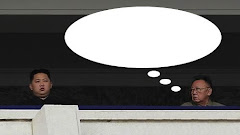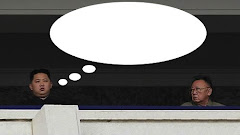What many people are unaware of is that one of the major bottlenecks is Hanawon, the government-run facility that orients the new arrivals, screens them to make sure there are no spies among them, and trains them for life in capitalist South Korea. This institution was set up by Kim Daejung and then expanded by his successor Roh Moohyun, two presidents often derided by the aforementioned hypocrites for cozying up to North Korea (when in fact each took in more refugees than all their predecessors combined).
If one is worried about spies in particular, it would be imprudent to speed up the process at Hanawon, as many have suggested they do so that more defectors could be processed. So it is very notable news that the government plans to build a new facility to help with the process.
:
South Korea announced Wednesday it would build a new resettlement centre to help a growing stream of refugees from communist North Korea assimilate in the capitalist South.In addition to the prospect of allowing more North Koreans to resettle in the South, I think this move has the potential for the flow of DPRK citizens through China to change the political situation. This could be good or bad, depending on how China reacts. On the one hand, they may hold fast to their agreements with long-time ally North Korea and crack down even harder.
Seoul, which currently operates a mandatory three-month resettlement course at the Hanawon centre, will build the second facility by the end of 2012, said the unification ministry in charge of cross-border affairs.
"The number of North Korean defectors keeps rising... the current Hanawon facility is on the verge of being overcrowded," spokeswoman Lee Jong-Joo told reporters.
"We felt we wouldn't be able to provide systematic support for resettlement with only the current Hanawon," she said, adding more than 2,000 North Koreans have fled to the South every year since 2006.
Work on the new centre, in the town of Hwacheon, around 120 kilometres (75 miles) northeast of Seoul, will begin in July. It will accommodate about 500 people at a time.
More than 21,700 North Koreans have fled their impoverished and hunger-stricken homeland since the 1950-53 war, the vast majority in recent years.
On the other hand, they might decide it's best to just, ahem, go with that flow and let it turn into a torrent of sorts. This has the potential to eventually create a situation in which the structures holding North Koreans in place simply collapses. And that could precipitate a situation, à la East Germany in 1989, in which the Pyongyang regime itself collapses. (This is the goal of the infamous Dr Norbert Vollertsen.)
Back to Hanawon. In case you're wondering what exactly happens there, the AFP goes into some detail:
South Korea sends each new arrival on a three-month assimilation and training course at Hanawon, in the city of Anseong, south of Seoul, and provides financial and housing support afterwards.Frankly, I think we could turn the resettlement into more of a win-win situation by encouraging the North Koreans to settle in areas that are suffering from population decline. These rural areas may be a bit more at the North Koreans' speed, and these local areas might actually welcome the influx of new blood to the region. And with all the Vietnamese and Chinese around there who are also trying to make it in the capitalist South, they might enjoy the company.
The course covers career guidance, information on the South and basic everyday skills such as buying a subway ticket, opening a bank account and using a credit card.
But many struggle to find decent jobs, partly because their ideological education in the North is irrelevant in the South. Some allege discrimination in the workplace.
Seoul will also offer a more diverse range of training courses for refugees based on their previous jobs in the North such as doctors and teachers, Lee said.
She said the ministry had long focused on helping new arrivals. "But with the number of refugees rising, we thought we need more systematic programmes to help them settle here."
Sphere: Related Content






















Hi, thanks for the post. I found this while doing some research into the Hanawon. I am concerned that the Hanawon is actually a control institution primarily for surveillance, rather than social welfare. With the huge obstacles in their way, a three-month course seems far too inadequate to adjust to life in the South Of course there are now 20 Hana Centres around the country to provide more long-term support, but in that case doesn't the Hanawon seem even more irrelevant? I realise the government cannot openly state the case, but it seems it is first and foremost a control and surveillance facility. It is the post-Hanawon support which is critical for most refugees, I would suggest. Do you have any thoughts on this? Thanks
ReplyDeleteQuick answer, since I've got to get to work on something else. In a nutshell, I think they need the help on both ends. Three months is not enough, and they need regular support, perhaps for years to come.
ReplyDeleteBut the Hanawon facility is crucial, partly for what you suggest. But I don't think it's really a secret that the time in Hanawon is intended to help the ROK authorities figure out who might be a spy. Frankly, given what the DPRK does sometimes, it's absolutely necessary that they use that opportunity to sort people out.
Let's not forget that North Korean spies have done some damage in the South. I still remember when 리한영 was assassinated in Pundang, supposedly in retaliation for the defection of Hwang Jang-yop... I or my car must have fit some sort of description of someone or some thing, because a few days afterward, on a late-night trip back from Sŏraksan to Seoul I was stopped and my car was searched at several different random checkpoints. My girlfriend was kinda freaked after it kept happening.
But I digress.